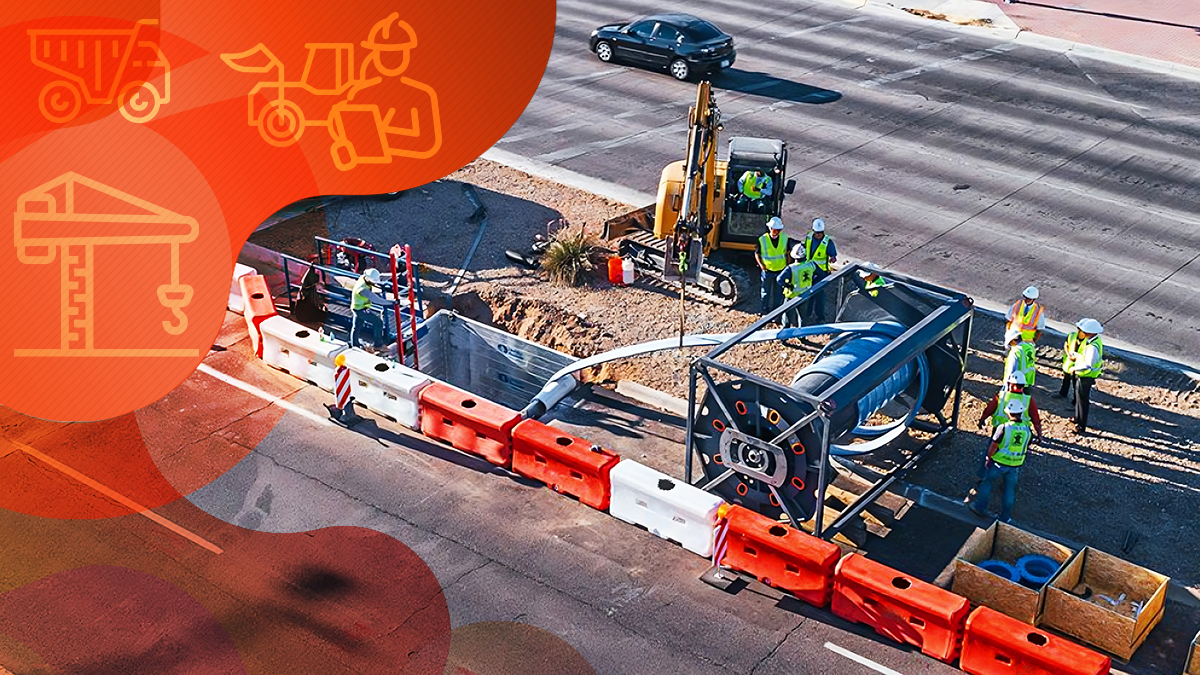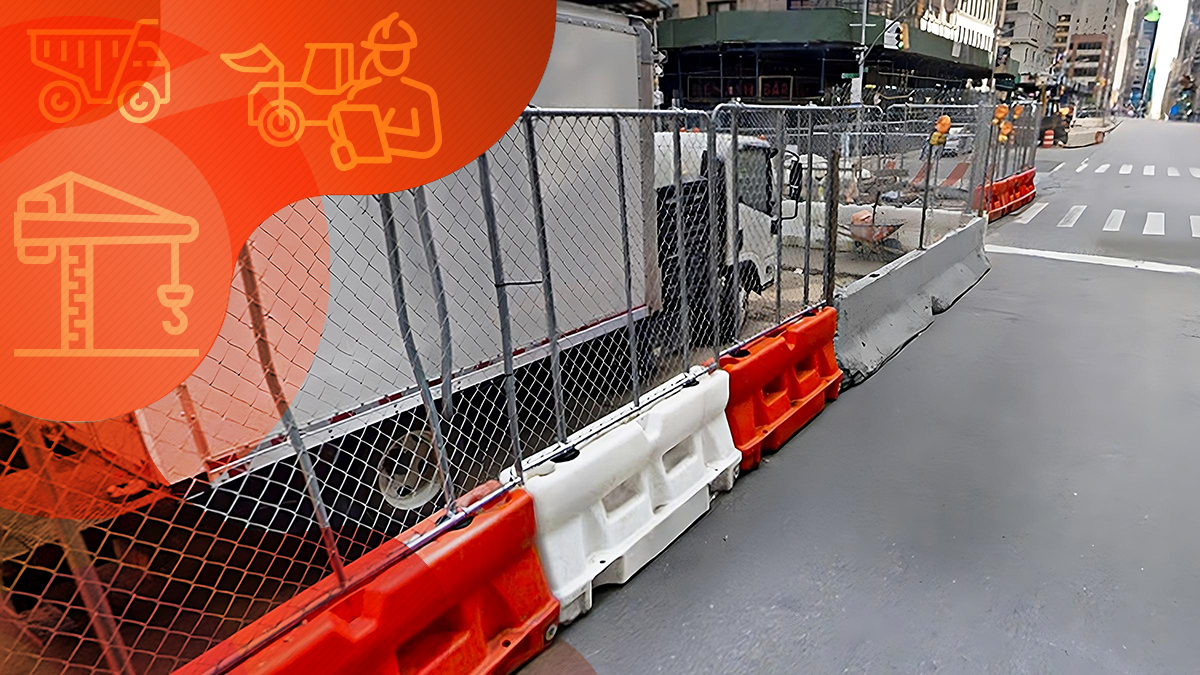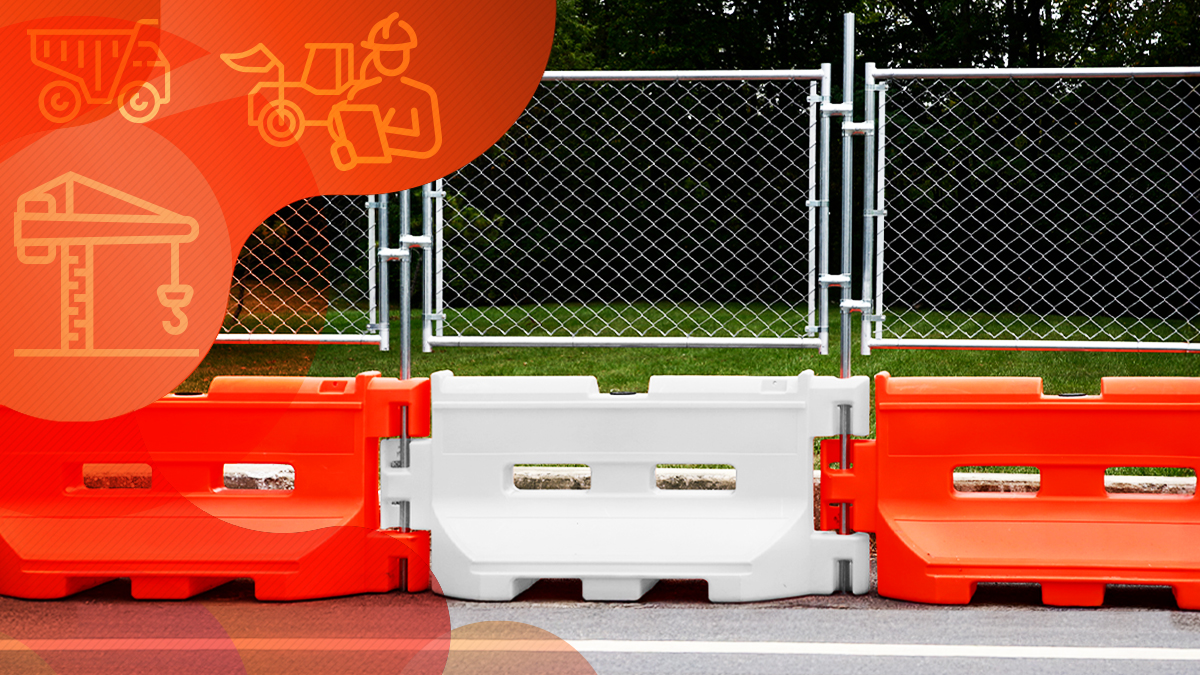The Complete Guide to Traffic Control: Purpose, Devices, and Best Practices
Master the essentials of traffic control and keep roads safe with this comprehensive guide to devices, strategies, and best practices.

Keeping highways, roads, and streets safe is about a lot more than ensuring drivers follow the rules and drive safely when they get behind the wheel. Proper traffic control is a huge part of ongoing everyday safety, as well.
Traffic control leverages tools and systems like signage, lights, speed limits, and markings to keep pedestrians and drivers alike out of harm’s way. It’s also a crucial part of modern transportation and community sustainability.
In this comprehensive guide, we’ll dive into everything you need to know about traffic control today to facilitate safe projects that go smoothly every time. We’ll cover what it’s really all about and why it’s important. We’ll touch on essential traffic devices, different types of traffic control, and more, as well.
What Is Traffic Control?
Broadly speaking, traffic control is the discipline of managing traffic patterns. This is accomplished through the safe direction of vehicles, pedestrians, and goods through highways, streets, bypasses, and other roadways.
Traffic control can be either temporary or ongoing. There are also multiple possible approaches to traffic control, depending on the circumstances. However, common examples include the implementation of road signs, the creation of barricades or detours, and the addition of safety markings to asphalt or sidewalk.
Key benefits of proper traffic control include:
- Keeping roads safe for pedestrians and vehicles.
- Preventing congestion and keeping traffic flowing smoothly.
- Ensuring safe, efficient completion of roadwork, construction, and maintenance.
- Keeping roadways compliant with all current laws and safety regulations.
Traffic Control vs. Traffic Management
Although traffic control and traffic management are related, it’s important to realize they’re not the same. Traffic control covers tools and immediate actions taken on-site to regulate traffic and ensure specific locations are safe. Common traffic control measures may include placing barricades, cones, signage, and similar tools.
In contrast, traffic management involves tasks like risk analysis, strategic coordination, and the creation of detailed plans to help facilitate safe, ongoing traffic flow. Examples of common traffic management concerns may include road maintenance schedules, construction projects, rule enforcement, and traffic signal coordination.


In short, traffic management takes a long-term approach to roadway safety, while traffic control focuses on short-term measures. Together, the two facilitate the safe, well-managed road systems people rely on every day to get where they’re going.
Why Is Traffic Control Important?
Without traffic control, there would be little rhyme or reason to the way roads and highways operate. Traffic control is crucial for keeping traffic flowing, even under extenuating circumstances, as well as to reduce the possibility of driver conflict.
Traffic control ensures safety
Safety is the number one reason traffic control matters. Roads that lack order and direction are dangerous and make accidents more likely. Traffic control devices and other measures provide this direction.
Traffic control keeps traffic flowing
Road issues and unforeseen circumstances happen, but proper traffic control helps keep traffic flowing smoothly regardless. It also ensures roadways operate as smoothly and efficiently as possible under everyday conditions, including daily high-traffic periods like rush hour.
Traffic control reduces accident severity
Although traffic accidents are always possibilities, efficient traffic control ensures they happen as seldom as possible. Measures like posted speed limits and signage directing traffic flow also help reduce the severity of accidents when they do occur.
Traffic control helps reduce environmental impacts
Modern approaches to traffic control can even be leveraged to keep the environmental impact of driving to an absolute minimum. Common traffic control goals that promote a healthy, balanced environment include noise reduction, greenhouse gas reduction, and pollution reduction.
Essential Traffic Control Devices
The use of essential traffic control devices and equipment is a critical part of keeping roadways safe, both on a daily basis and during roadwork or maintenance. Here are some of the most common examples to know.
Road signs
Road signs are truly everywhere – on every road under every circumstance – and serve a wide range of purposes. From stop signs to yield signs, speed limit signs to exit signs, road signs provide drivers and pedestrians alike with the information they need to navigate modern roadways.
Safety crews also rely on road signs to warn drivers of potential hazards and quickly let them know what to do under emergency conditions. Successful road signs often rely on important visual cues (including color and shape) with easily understood symbos and messages to convey information instantly.
Cones and delineators
Traffic control devices like orange cones, delineators, and similar tools serve multiple purposes related to safety and traffic flow. Examples include:
- Guiding drivers under emergency conditions.
- Safely directing traffic flow.
- Warning drivers of hazards and visibly marking key areas.
- Creating safe paths for drivers to follow while navigating a specific area.
Road crews frequently use traffic cones to signify hazards and direct traffic a certain way. For example, they may be present in situations where children are playing or potentially crossing a road. Delineators are most often used to create lanes and help drivers navigate detours, lane shifts, and similar situations.
Like road signs, cones and delineators typically leverage bright colors, reflective surfaces, lights, etc to boost visibility.
Water barricades
Water barricades are hardy barriers that are lightweight when empty for easy storage and transportation but solid and stable when filled with water (or sometimes sand). In traffic control situations, they’re used to help block or otherwise guide traffic under a variety of conditions.
Some water barriers are also specially designed to absorb some impact in the event of a vehicle losing control. In contrast to concrete barriers, water barriers are:
- More flexible, reducing vehicle damage in case of vehicle impact.
- Lightweight and easy to transport when empty.
- Versatile, thanks to their ability to connect to one another.
- Highly visible, as they’re usually either brightly colored, covered with reflective surfaces, or both.
- Cost-effective and simple to fill and empty, for ease of use.


Traffic signals
Traffic signals provide automated regulation for traffic flow by deciding who has the right-of-way at a given intersection, as well as telling drivers what to do (and what not do) under various conditions.
They’re an essential part of keeping intersections organized, boosting traffic capacity, and attracting attention. They can also be used to interrupt heavy traffic, as needed, to assist road crews, allow pedestrians to cross, etc.
Traffic signals work via a phasing system to keep traffic flowing smoothly through an intersection. In traffic control, a phase describes a particular action or movement that won’t conflict with any other action or movement.
Types of Traffic Control Plans
Also sometimes called a TCP for short, a traffic control plan is a detailed plan that includes all details necessary to safely facilitate a traffic closure. Examples include but aren’t necessarily limited to:
- Types of traffic control equipment needed (and how many).
- Maps of the area affected by the closure.
- Exact locations of security personnel, volunteers, workers, etc.
- Any applicable dates, schedules, or timeframes.
- Details related to how traffic impacts will be mitigated for the duration of the closure.
Traffic control plans can be simple or complex. They can also vary according to factors like the reason for a road closure (e.g., scheduled maintenance or a city event) or the type of roadwork being performed. Different examples include:
- Basic plans: This type of plan is for areas with low traffic volume, including most residential areas. They usually call for standard flagging and protocol.
- Intermediate plans: For closures in high-traffic areas, work that might call for multiple lane closures, or projects that affect multiple transportation systems, an intermediate traffic plan is usually best.
- Complex plans: These are the most complicated types of traffic control plans. Generally speaking, they’re reserved for large-scale detours that may include interstate roadways, multiple intersections, or aerial line crossings.
Temporary vs. Permanent Traffic Control
Temporary and permanent traffic control share the same basic principles. Both are meant to facilitate optimal traffic flow, prevent accidents, and keep people safe. However, the reasons for related road closures are different, as are the types of traffic control devices used.
Temporary traffic control is for short-term events, like road maintenance, city events, or standard construction projects. Common traffic control devices employed include options for directing traffic or temporarily blocking areas (e.g., water barricades or traffic cones).
Permanent traffic control provides long-term and indefinite solutions for managing traffic. Think familiar measures you’re used to seeing on roads or highways every day, like traffic signals, road markings, and permanent signage like stop signs or yield signs. Permanent markings for crosswalks, lane demarcation, etc are also part of permanent traffic control.


When Is Traffic Control Required?
Traffic control becomes necessary in any public situation where workers are facilitating maintenance, roadwork, or any occurrence that could increase the risk of accidents or cause hazards. Implemented measures help protect drivers, pedestrians, and professional personnel for the duration of the closure.
Typical situations that require detailed, thorough traffic control solutions include:
Construction work
When roadways are under construction, traffic control devices and protocols help workers do their jobs safely. They also successfully redirect traffic around any obstructions or potential hazards.
Road closures
Even when active construction work or maintenance isn’t underway, it may be necessary to close a road for safety reasons. Examples include weather-related incidents like landslides or floods, as well as broken water mains, etc.
Traffic incidents
Even well-managed roadways occasionally see incidents that call for emergency traffic control measures. Hazardous materials can spill, vehicle collisions or pile-ups can occur, and vehicles can stall. Traffic control helps vehicles and passersby safely navigate around the hazard, while giving emergency personnel the space they need to do their jobs safely.
Public events
Public events like parades, street fairs, city-wide holiday celebrations, and red-carpet showcases can require the temporary closure of specific roads. Large-scale events like major sporting events, big concerts, or organized races also attract large crowds and cause significant traffic congestion on nearby roads. Traffic control helps keep traffic flowing as smoothly as possible in situations like these while keeping drivers, event-goers, and event staff safe.
Thorough Traffic Control Helps Roadwork Go Smoothly
Roadway situations like construction work, scheduled maintenance, emergencies, and occasional community events are simply part of life, as is the potential traffic congestion they can cause. But the right traffic control devices, plans, and techniques ensure everything goes as smoothly as possible and everyone involved stays safe.
Understanding all the ins and outs of detailed traffic safety also helps you create even safer, more secure work zones under a wide range of different conditions.
Ready to learn more and make your next roadwork project your safest yet? Check out our handy guide on work zone traffic safety today!
Trend now

Reducing Impact Damage with Water-Filled Plastic Jersey Barriers
Understanding the effects of barrier materials on vehicles and their occupants can help improve road safety.

Choosing Between Concrete or Plastic Jersey Barriers
Not all barriers are built the same. Here’s what to know before choosing between plastic and concrete.

Advantages of Water Barriers with Fence Toppers
Learn how a fence topper transforms water barriers into a more secure, private, and effective work site solution.

